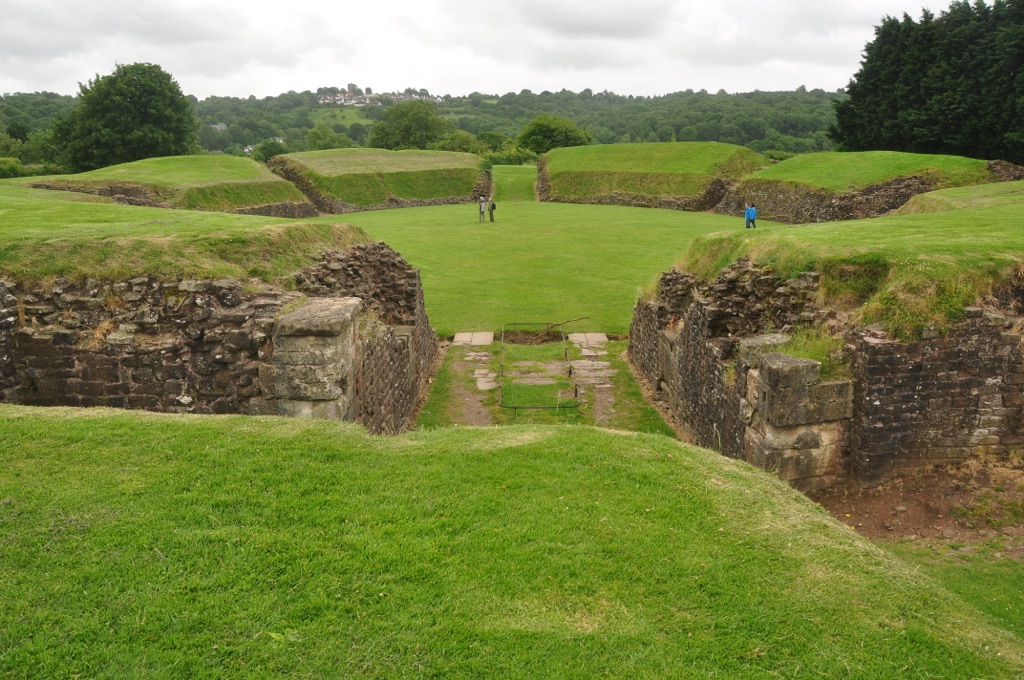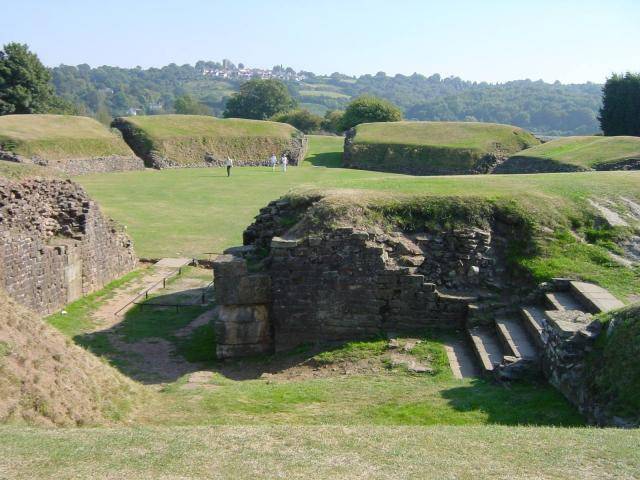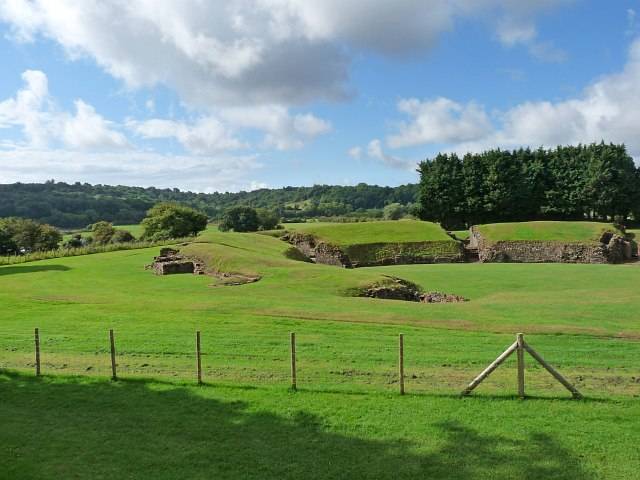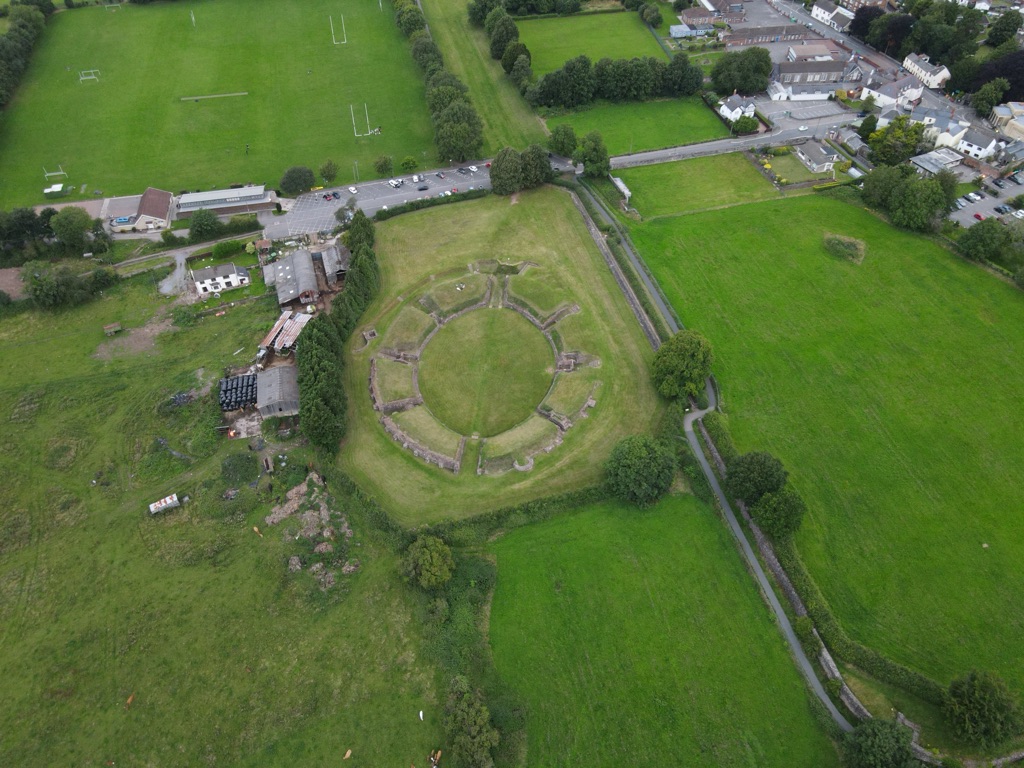The Caerleon Amphitheatre, a grand structure nestled in the south of Wales, stands as a testament to the Roman presence in Britain. Known as Isca to the Romans, Caerleon boasts one of the most impressive Roman military remains in Europe. The amphitheatre, often referred to as the ‘Arthurian Round Table’, has sparked the imagination of many. It served as a venue for entertainment and possibly military training for the legion based there. Today, it is a significant archaeological site, offering insights into Roman military life and leisure activities.
Get your dose of History via Email
Historical Background of Caerleon Amphitheatre
The Caerleon Amphitheatre, a relic of Roman grandeur, was unearthed in the 1920s. Mortimer Wheeler, a renowned archaeologist, led the excavation. The Romans, masters of engineering, constructed this amphitheatre around 90 AD. It served the nearby fortress of the Second Augustan Legion. Over time, the site saw various uses and even became a haven for medieval settlements. Its historical significance is undeniable, having been a stage for gladiatorial combat and public spectacles.

Caerleon itself, established as a fortress in 75 AD, was a strategic military hub. The amphitheatre, part of this complex, could seat up to 6,000 spectators. It was a focal point for the legionnaires’ downtime. The structure underwent several modifications over the centuries. Yet, it fell into disuse as Roman power waned. The amphitheatre lay forgotten until its rediscovery, which brought its stories back to life.
After the Romans left Britain, the amphitheatre’s fate mirrored that of many Roman structures. It was repurposed, with locals using its stones for building materials. The site’s historical importance, however, was not lost. It became associated with legends of King Arthur in the medieval period. This connection added a layer of myth to its already rich history.
The amphitheatre’s rediscovery in the 20th century was a significant event. It shed light on Roman military life and entertainment. The site has since been preserved and is now a popular tourist attraction. Its excavation has provided valuable artifacts and insights into Roman Britain. These findings have helped historians piece together aspects of ancient life that were previously a mystery.
Today, the Caerleon Amphitheatre is a poignant reminder of the past. It stands as a symbol of Roman influence in Britain. The site continues to be a focus for archaeological study. Researchers delve deeper into its history, ensuring that the stories of those who built and enjoyed it are not forgotten.

About Caerleon Amphitheatre
The Caerleon Amphitheatre, a marvel of Roman architecture, is an elliptical structure. It measures 92 meters by 67 meters. The amphitheatre’s design reflects the Romans’ advanced understanding of engineering and acoustics. It features tiered seating, vaulted entrances, and an arena floor. The structure could accommodate a large number of spectators, showcasing the importance of public events in Roman society.
Constructed primarily of local stone, the amphitheatre was built to last. The Romans used their signature opus caementicium, a concrete-like material, for durability. The seating tiers provided an unobstructed view of the arena. This design ensured that events could be enjoyed by all, regardless of social standing.
The amphitheatre’s entrances, known as vomitoria, allowed for efficient crowd movement. Spectators could quickly enter and exit the venue. This feature highlights the Romans’ attention to detail and consideration for public safety and comfort.
Architectural highlights of the Caerleon Amphitheatre include the remains of the arena wall and the post holes for the velarium. The velarium was a canopy that protected spectators from the elements. These elements not only provided comfort but also added to the grandeur of the amphitheatre.
Over the years, the amphitheatre has undergone conservation efforts to preserve its structure. These efforts ensure that the amphitheatre remains a tangible link to the past. Visitors can walk through the same arches that Roman spectators did nearly two millennia ago.

Theories and Interpretations
The Caerleon Amphitheatre has been the subject of various theories and interpretations. Its use for entertainment is well-documented. However, some suggest it also served as a military training ground. The amphitheatre’s proximity to the fortress supports this theory. It could have been an ideal location for mock battles and exercises.
Mysteries surround the amphitheatre, particularly regarding its connection to Arthurian legends. Some believe it was the inspiration for the Round Table. However, there is no concrete evidence to support this claim. The association with King Arthur adds a mythical dimension to the site’s history.
Interpretations of the amphitheatre’s design and construction have evolved over time. Initially, scholars believed it was a standard entertainment venue. Further excavations have revealed nuances that suggest a dual purpose. This includes evidence of workshops and stores within the complex.
Dating the amphitheatre has been carried out using various methods. These include stratigraphy and radiocarbon dating. These techniques have helped establish a timeline for the construction and use of the amphitheatre. They have also aided in understanding the broader context of Roman Britain.
The Caerleon Amphitheatre continues to be a site of academic interest. Archaeologists and historians work to interpret its past. They use a combination of physical evidence and historical records. This work helps to paint a more complete picture of life in Roman Britain.
At a glance
- Country: United Kingdom
- Civilization: Roman
- Age: Approximately 1,930 years (Constructed around 90 AD)

